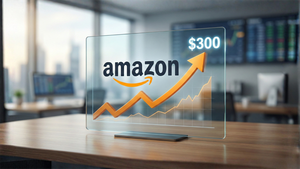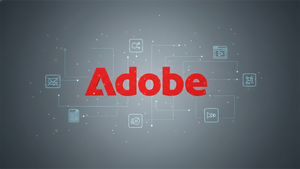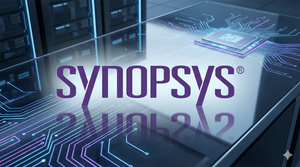
The global technology landscape is currently witnessing an unprecedented acceleration in artificial intelligence innovation, transforming industries and redefining competitive advantages. Major tech players, including Tesla (NASDAQ: TSLA), Meta Platforms (NASDAQ: META), and Salesforce (NYSE: CRM), are at the forefront of this intense AI arms race, pouring billions into research, development, and strategic integrations. This relentless pursuit of AI dominance is not merely about technological superiority; it carries profound immediate implications for financial markets, driving unprecedented valuations in AI-leading companies and prompting a massive surge in capital expenditure across the sector. As AI transitions from a nascent technology to an indispensable strategic imperative, its advancements are setting the stage for a new era of economic growth, efficiency, and potentially, societal transformation.
The immediate ripple effects are already evident: bullish trends in technology stocks, a global scramble for AI talent and hardware, and a re-evaluation of business models across virtually every industry. Companies that successfully navigate this rapidly evolving environment by integrating AI into their core operations stand to reap immense rewards, while those that lag risk being left behind in a swiftly changing market.
A New Era of Innovation: Breakthroughs and Strategic Maneuvers
The past few years have seen a flurry of significant AI breakthroughs and strategic realignments, fundamentally altering the competitive landscape. From highly sophisticated generative AI models to advanced robotics and intelligent enterprise solutions, the pace of innovation is staggering.
Tesla's Vision: Autonomy and Humanoid Robotics
Tesla (NASDAQ: TSLA) is rapidly evolving beyond an automotive manufacturer into a prominent AI and robotics innovator. Its AI strategy is deeply integrated into its core products and future ambitions. The Full Self-Driving (FSD) system, relying on a pure vision-based approach and vast real-world data from its vehicle fleet, continuously learns to improve decision-making. While currently a Level 2 ADAS requiring supervision, Tesla aims for full autonomy, with a goal of supervised FSD launching in nearly all markets, including China, by 2025, and unsupervised FSD in the U.S. and most countries by late 2026.
A significant portion of Tesla's AI and robotics ambitions lies with the Optimus Humanoid Robot. Unveiled in August 2021, the Optimus Gen 2, revealed in December 2023, demonstrated significant advancements, including lighter weight, increased walking speed, and enhanced dexterity. Optimus can learn complex tasks by observing videos, similar to human learning. Elon Musk projects that Optimus could account for 80% of Tesla's future value, with ambitious targets of deploying 10,000 units in 2025. This move signifies Tesla's intent to disrupt manufacturing, logistics, and even domestic settings. Furthermore, Tesla has pivoted its AI chip strategy, focusing on its proprietary AI5 and AI6 chips for inference and training, respectively, after reportedly discontinuing the Dojo supercomputer project in August 2025. This vertical integration aims for superior performance and cost efficiency.
Meta's Open Approach: Llama, Superintelligence, and Smart Glasses
Meta Platforms (NASDAQ: META) is aggressively pursuing general intelligence and superintelligence, employing a dual strategy of massive investment and open-source contributions. The Llama (Large Language Model Meta AI) family is a cornerstone of its AI strategy. Llama 3 was released in April 2024, followed by Llama 3.1 in July 2024, which included a 405B parameter model—the first frontier-level open AI model. By the end of 2024, Meta released Llama 3.2 (multimodal) and Llama 3.3 70B (an efficient text-only model), with the latest Llama 4 released in April 2025. These models are integrated into Facebook, Instagram, and WhatsApp, making Meta AI on track to be the world's most used AI assistant by the end of 2024.
Meta is also venturing into AI-enhanced hardware with the Meta Ray-Ban Display Smart Glasses, launched in September 2025. These glasses combine AI and augmented reality with a built-in high-resolution display and a Meta Neural Band wrist controller that uses electromyography (EMG) to detect subtle muscle signals for voice-free control. This product aims to reduce smartphone reliance by enabling discreet, hands-free interactions and delivering AI-generated information directly into the wearer's line of sight. Meta's open-source strategy for Llama, coupled with its substantial capital expenditures for AI infrastructure, including plans for over 2 million GPUs by FY26, positions it as a major player in the democratization and advancement of AI.
Salesforce's Enterprise Evolution: AI-Powered CRM and Autonomous Agents
Salesforce (NYSE: CRM), a leader in Customer Relationship Management (CRM), is deeply embedding AI across its platform to enhance customer experiences and streamline business operations. Its long-standing Einstein AI platform powers predictive analytics and AI-driven chatbots. In 2025, Einstein Copilot became smarter and fully integrated across all Salesforce Clouds, anticipating user needs and automating complex tasks such as report generation.
A significant breakthrough is Agentforce, introduced in 2024. Agentforce represents Salesforce's "hard pivot" to agentic AI, building and deploying independent AI agents capable of executing tasks end-to-end without constant human intervention. These agents manage client queries and workflows, leveraging advanced AI/ML models for sophisticated decision-making. Agentforce is projected to handle 50% of all customer service requests autonomously and has already closed 1,000 deals, generating $100 million in annualized revenue by May 2025. This move differentiates Salesforce from competitors still focusing on copilots, solidifying its leadership in the AI CRM space, particularly in industry-specific solutions.
The AI Divide: Winners and Losers in a Reshaped Landscape
The relentless pursuit of AI dominance is creating a clear demarcation of potential winners and losers across various sectors, profoundly impacting market positions and investor sentiment. Companies that successfully integrate and monetize AI are poised for substantial gains, while those unable to adapt risk losing market share and relevance.
Tesla (NASDAQ: TSLA) is positioning itself as a "physical AI" company, where its automotive business serves as a data collection engine for its AI ambitions. If Tesla successfully scales FSD and Robotaxi services, it could transition from a high-volume manufacturer to a high-margin software and services provider, generating recurring revenue streams. The Optimus robot, if mass-produced as planned, could unlock multi-trillion-dollar market opportunities in manufacturing, logistics, and domestic services, fundamentally transforming the company's valuation. However, delays in FSD deployment have eroded credibility, and the substantial capital expenditures required for AI infrastructure and robotics present financial risks. Traditional automakers and even some EV competitors, struggling to match Tesla's pace in AI and robotics, could be significant losers, facing obsolescence if they fail to innovate quickly.
Meta Platforms (NASDAQ: META) stands to gain immensely by enhancing user engagement and ad monetization through AI. Its open-source Llama models aim to attract developers and foster a community-driven AI ecosystem, giving it a strong competitive edge against closed-source rivals. The integration of AI across Facebook, Instagram, and WhatsApp, coupled with innovations like the Ray-Ban Display Smart Glasses, solidifies Meta's position in advertising and potentially opens new hardware-driven revenue streams. Strong Q2 2025 earnings, driven by AI-enhanced ad efficiency, underscore this potential. Competitors like Google and TikTok face intensifying competition in social media, advertising, and AI development. However, Meta's substantial capital expenditures for AI infrastructure and persistent losses in its Reality Labs division pose challenges, requiring successful monetization beyond advertising.
Salesforce (NYSE: CRM), already a leader in enterprise software, is leveraging AI to maintain its dominant position in CRM. The integration of Einstein Copilot and the introduction of Agentforce provide a significant competitive edge by offering advanced predictive analytics, personalized recommendations, and sophisticated autonomous automation. This positions Salesforce as a leader in agentic AI, differentiating it from competitors who may still focus on human-assisted copilots. The company's AI-powered cloud solutions are projected to generate nearly a trillion dollars in new revenues for customers by 2028. Direct competitors such as Microsoft Dynamics 365, SAP, Oracle, and Adobe are also heavily investing in AI for their enterprise offerings, creating an intense rivalry, particularly with Microsoft, which leverages its broader ecosystem. Smaller, AI-native platforms are emerging, claiming faster implementation and better ROI, posing a threat to established players.
Overall, potential winners include AI-native companies, "full-stack" AI players (like Tesla with FSD/Optimus and Meta with Llama/advertising/metaverse), platform providers offering AI infrastructure (e.g., NVIDIA, Microsoft Azure), and adaptive incumbents like Salesforce who successfully integrate advanced AI into their dominant platforms. Potential losers are companies relying on legacy systems, those without proprietary data or strong AI talent, and businesses that overpromise and under-deliver on AI initiatives. Investor sentiment is currently "risk-on" towards tech giants in AI, but a healthy skepticism remains regarding the quality of AI-generated content and the potential for overvaluation or unfulfilled promises.
Reshaping Industries: Broad Implications and Regulatory Crossroads
The AI innovation race is not merely a technological contest but a fundamental reordering of economic and societal structures. Its broad implications extend across industries, influencing competitive dynamics, spurring unprecedented regulatory efforts, and drawing parallels to historical technological shifts.
Across the automotive sector, AI is revolutionizing everything from vehicle design and manufacturing to safety and the driving experience. Autonomous driving, powered by AI, promises to enhance road safety and contribute to the "Mobility-as-a-Service" (MaaS) trend, potentially decreasing vehicle ownership. Tesla's (NASDAQ: TSLA) robotaxi push is a prime example, aligning with the vision of autonomous fleets reshaping urban transport. AI also optimizes manufacturing processes, supply chains, and enables predictive maintenance, making production more efficient and sustainable.
In social media, platforms like Meta Platforms (NASDAQ: META) are leveraging AI to personalize content feeds, enhance engagement, and refine advertising targeting. This makes platforms more immersive and tailored but also raises significant concerns about content moderation and the proliferation of AI-generated misinformation and deepfakes. AI is crucial for identifying and removing harmful content, but the rapid advancement of generative AI presents a continuous challenge in distinguishing human from bot-generated content. New features like facial recognition, augmented reality filters, and sophisticated chatbots are reshaping user interaction, while data privacy remains a paramount concern.
The enterprise software sector, where Salesforce (NYSE: CRM) is a key player, is undergoing its next major revolution driven by generative AI and AI agents. The industry is transitioning from traditional Software-as-a-Service (SaaS) to selling AI-powered services, where successful adaptation is expected to yield significant revenue growth. AI agents, capable of autonomous decision-making and action-taking, are fundamentally altering traditional software stacks by replacing logic and presentation layers with an agentic AI layer. This impacts everything from CRM to ERP systems, leading to enhanced automation, deeper insights, and faster data-driven decisions. The emergence of AI-native competitors, offering superior solutions at lower costs, is putting pressure on midsize enterprise software companies.
From a regulatory and policy perspective, governments worldwide are engaged in a "race to AI regulation," seeking to balance innovation with societal protection. The European Union has adopted a "regulatory-first" approach with the comprehensive European AI Act (AIA), setting high global standards for AI safety through burdensome risk assessment and transparency mandates. In contrast, the United States has historically favored a "light-touch" approach, relying on private sector innovation, though national security, bias, and deepfake concerns are driving legislative discussions. China aims to be the global leader in AI by 2030, with massive government funding and extensive data access, while also influencing global AI governance. The rapid development of AI raises significant ethical concerns regarding data privacy, algorithmic bias, and the potential for AI systems to make decisions without sufficient human oversight. This calls for increased transparency, accountability, and community-centered development.
Historically, the current AI boom is often compared to the dot-com bubble or the Industrial Revolution. However, many experts argue that AI's integration into critical workflows and its proven earnings potential make it a more fundamentally robust and transformative shift. The "global AI race" is seen as the 21st century's new space race, driven by national ambitions and geopolitical significance, with control over AI technology potentially leading to new forms of power and influence.
The Road Ahead: Navigating AI's Evolving Future
As the AI innovation race continues its relentless pace, the coming months and years will unveil a landscape of profound change, demanding strategic pivots and opening new market opportunities while presenting significant challenges. For Tesla (NASDAQ: TSLA), Meta Platforms (NASDAQ: META), and Salesforce (NYSE: CRM), the evolution of their AI strategies will dictate their future market positions.
In the short-term (next 1-3 years), we anticipate accelerated integration of AI into operational workflows, leading to enhanced efficiency and personalized customer experiences. Generative AI tools will become more sophisticated, transforming content creation, design, and even code generation, offering businesses significant time and cost savings. The focus will be on demonstrating tangible ROI from AI investments. For Tesla, this means scaling its FSD deployments and launching robotaxi services in more cities, such as Austin in September 2025. Meta will likely see further revenue growth from AI-enhanced ad targeting and expanded user adoption of the Meta AI app. Salesforce will focus on proving the efficacy and ROI of its Agentforce platform in automating complex customer service tasks.
Looking to the long-term (3-10+ years), the possibilities include AI surpassing human intelligence, leading to a "cognitive industrial revolution." Autonomous systems, advanced robotics like Tesla's Optimus, and multimodal AI will redefine industries. Tesla aims for Optimus to account for 80% of its future value, with production scaling to 1.2 million units annually within five years, potentially generating $30 billion in revenue by the late 2030s. Meta's long-term vision positions the metaverse as a complementary goal, with AI deeply integrated into AR/VR products like the Ray-Ban Meta AI glasses, aiming for "personal superintelligence." Salesforce envisions a "digital workforce" where humans and AI agents collaborate seamlessly. This long-term evolution will also necessitate significant societal adjustments, particularly concerning the future of work and human-AI interaction.
Strategic Pivots and Adaptations: Companies must embrace an "AI-first" ecosystem, deeply embedding AI into core products rather than treating it as an add-on. This requires continuous strategic investment, aggressive talent acquisition and workforce reskilling, and a relentless focus on data quality and customization for proprietary AI models. The trend towards open-source and smaller, more efficient AI models will foster broader collaboration and lower costs. Furthermore, establishing robust governance and ethical AI frameworks will be paramount to building trust and navigating risks like bias and privacy concerns. Tesla's shift from exclusive in-house AI hardware to collaborations with NVIDIA, AMD, and Samsung demonstrates a strategic pivot towards speed and flexibility. Meta's open-source Llama strategy aims to build a broad AI ecosystem, while Salesforce's "rebalancing" of its workforce towards AI agents highlights its commitment to automated efficiency.
Market Opportunities and Challenges: AI is projected to add trillions to the global economy by 2030, driven by efficiencies and new products. Emerging markets have an opportunity to "leapfrog" traditional development stages by addressing infrastructure gaps with AI. However, challenges abound, including job displacement from automation, ethical dilemmas around bias and accountability, infrastructural deficiencies, and regulatory uncertainty. The intensifying competition at the AI frontier means the performance gap between top models is shrinking, demanding continuous innovation to maintain leadership.
Conclusion: A Transformative Era Beckons
The AI innovation race represents a profound structural shift in technology and business, far surpassing the scope of previous technological trends. Its lasting impact will be felt in sustained productivity gains, the genesis of entirely new industries, and a fundamentally reshaped global economic landscape. The ability of AI, particularly deep learning, to act as a "general-purpose method of invention" suggests a self-accelerating cycle of innovation that will drive technological progress for decades to come. Ethical considerations and robust governance will be critical to ensure that these advancements broadly benefit society and effectively mitigate potential risks.
The global AI market is on an exponential growth trajectory, projected to soar from $189 billion in 2023 to an astounding $4.8 trillion by 2033. This signifies a shift in investment opportunities from core infrastructure towards software and service companies capable of seamlessly integrating AI into their offerings. AI is expected to impact approximately 40% of jobs worldwide, automating routine tasks while simultaneously enhancing existing roles and creating entirely new ones.
For investors, the coming months demand vigilance and a discerning eye:
- AI Agent Efficacy and ROI: Look beyond marketing hype and scrutinize real-world performance and proven return on investment for agentic AI solutions. Companies that demonstrate tangible productivity gains and cost savings will be key differentiators.
- Infrastructure vs. Software: While hardware demand remains robust, observe the shift in investment opportunities towards software and service companies effectively integrating AI, as this represents the next wave of value creation.
- Regulatory Developments: Keep a close watch on evolving global AI regulations, as these frameworks will profoundly shape market dynamics, data usage, and ethical guidelines, particularly impacting data-heavy companies like Meta.
- Specialized AI Solutions: Favor companies that successfully develop and deploy industry-specific AI applications delivering measurable results, moving beyond generalized AI.
- Data Readiness and Governance: Evaluate how companies are addressing the challenge of "AI-ready data" and implementing responsible AI practices, as these are foundational for successful AI scaling.
- Company-Specific Catalysts: For Tesla (NASDAQ: TSLA), monitor the progress of robotaxi expansion and the scalability of Optimus production. For Meta Platforms (NASDAQ: META), assess continued AI-driven ad revenue growth and any signs of metaverse monetization offsetting Reality Labs losses. For Salesforce (NYSE: CRM), track the adoption and demonstrated ROI of its Agentforce platform and AI Cloud 2.0.
- Open Source vs. Proprietary Models: Observe the continued narrowing of the performance gap between open-weight and closed models, which could influence the competitive landscape and lower adoption barriers for enterprises.




